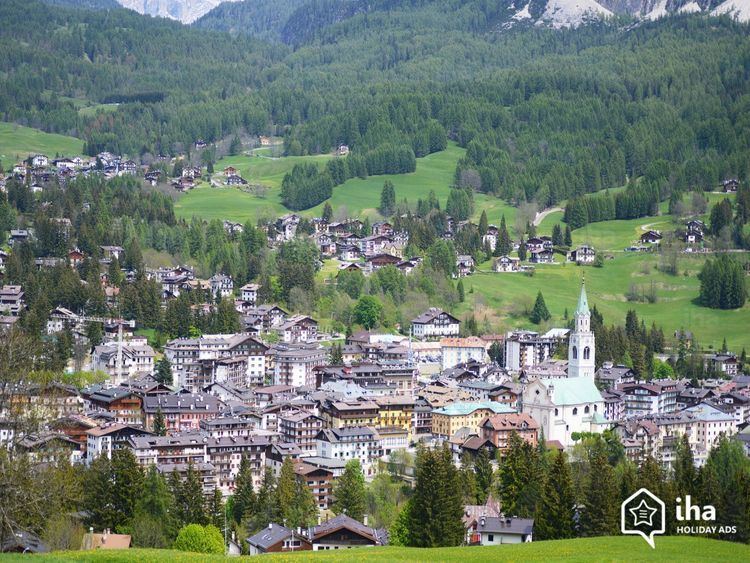Comuni 69 Postal code 32100 Area 3,678 km² | Time zone CET (UTC+1) Telephone prefix 0437 Population 212,667 (2012) Area code 0437 | |
 | ||
Points of interest Destinations | ||
Pordoi pass at the arabba province of belluno italy
The Province of Belluno (Italian: Provincia di Belluno; German: Provinz Belluno) is a province in the Veneto region of Italy. Its capital is the city of Belluno.
Contents
- Pordoi pass at the arabba province of belluno italy
- Map of Province of Belluno Italy
- Geography
- Climate
- History
- Economy
- Linguistic minorities
- Inhabitants with foreign citizenship
- Comuni
- References
Map of Province of Belluno, Italy
It has an area of 3,678 square kilometres (1,420 sq mi) and a total population of about 200,000.
Geography
The province of Belluno is rather wide, and almost entirely occupied by mountain areas. It encompasses the natural and historical regions of Cadore, Feltrino, Alpago, Val di Zoldo, Agordino, Comelico and Ampezzano. The eastern part of the province features the Dolomites, including the famous Tofane, Marmolada, Tre Cime di Lavaredo and Antelao. The province is rich in water, with the presence of the wide Piave River, with its affluents Boite and Cordevole.
The southern part is called Valbelluna, the widest and most populous valley of the province, which is bordered by the Venetian Prealps. The National Park of Belluno Dolomites is located in the province.
Climate
The province of Belluno's climate is among the most severe in the Alps. It is mostly influenced by the continentally, provided by the Dolomites and it is very similar to the eastern Tyrol's climate, or even more severe in the Prealps of the southern side.
The province may be divided in the following climatic zones:
History
The oldest archaeological find in the province is that of Lagole di Calalzo, in Cadore, belonging to a c. 5th century BC sanctuary dedicated to a health god of Paleoveneti. A larger site, a necropolis, has been excavated in the commune of Mel. Findings from these sites are now housed in the Museums of Pieve di Cadore and Mel.
From 1420 until 1797, the area of Belluno was part of the Republic of Venice. When conquered by the French, it became a subject of the Austrian Empire as a part of Venetian Province. Belluno remained under Austrian control after the Napoleonic Wars, as part of the Kingdom of Lombardy–Venetia until 1866, when it was ceded to the newly formed Kingdom of Italy. In 1923, the Province of Belluno obtained Cortina d'Ampezzo, Saint Lucia and Livinallongo Colle del Col di Lana which had been part of Austria-Hungary (the County of Tyrol).
In 1943, when the Italian government signed an armistice with the Allies, the province was occupied by Nazi Germany, which reorganised it as the Operation Zone of the Alpine Foothills and put it under the administration of Gauleiter Franz Hofer. The region was de facto annexed to the German Reich (with the addition of the region of Trentino-Südtirol) until the end of the war. This status ended along with the Nazi regime and Italian rule was restored in 1945.
Economy
Until recently, the province's economy was based on poor mountain agriculture, now less important, with the exception of the cultivation of beans in the Lamon highlands and the production of Piave cheese in the Dolomites valleys. Today, Belluno has one of the most important industrial sectors of northern Italy, the production of eyeglasses (Luxottica has its headquarters in Agordo, for example). Also important are the manufacturing sectors of home appliances (Zanussi and others) and bathroom fixtures (Ceramica Dolomite, IdealStandard).
One of the most important factors of the Bellunese economy is tourism. Cortina d'Ampezzo, Alleghe, Arabba, Sappada, and other locations are renowned in Italy and abroad.
Linguistic minorities
In the province, language minorities are present, which are now recognized by law:
Inhabitants with foreign citizenship
The top ten countries of origin of the inhabitants of Belluno with foreign citizenship at December 31, 2010 were:
Comuni
There are 69 comuni (singular: comune) in the province. As of June 30, 2005, the main comuni by population are:
